On September 14, 1969 an odd-looking Mopar rumbled onto the track for NASCAR’s first-ever Talladega 500—its sky-high rear wing making it stand out like a biplane amongst the other cars in the field.
While Dodge’s new “Charger Daytona” had an unorthodox profile and probably received some confused looks from the spectators, everything made sense once the race began. In addition to winning that inaugural Talladega 500, a Charger Daytona would go on to win the Texas 500 to close the 1969 season. And a few months later, a Charger Daytona became the first car to break NASCAR’s 200 mph barrier.
The age of the “Aero” cars had arrived.
You may also enjoy this article and podcast too: We Spoke with Ralph Moody Jr. About His Quest to Restore a Holman-Moody Ford Torino Talladega Prototype
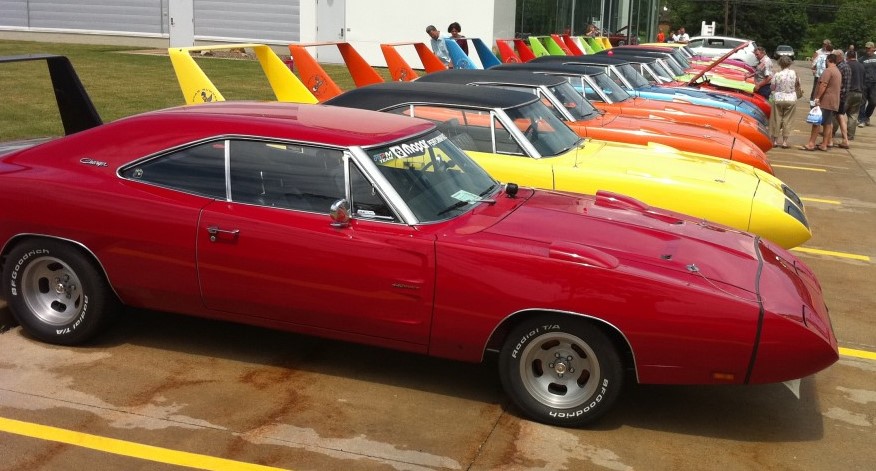
Preparing for Takeoff
The Dodge Charger Daytona was an evolution of the Dodge Charger 500. That earlier Charger 500 had some key aerodynamic enhancements like a modified front grille and flush rear backglass to help it slip through the air.
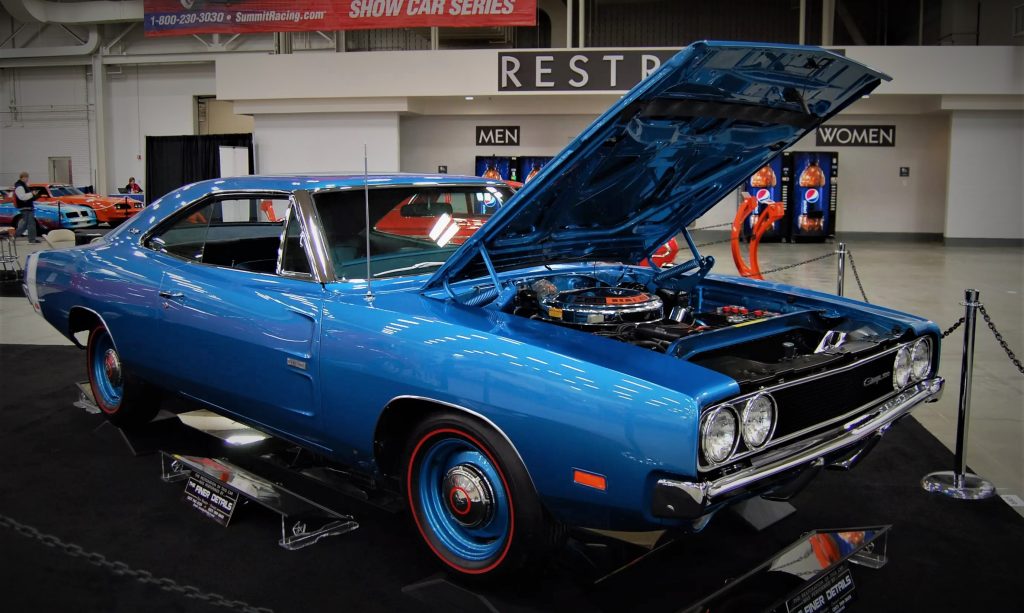
Once on the track, it didn’t take long for Dodge engineers to see the benefits of the Charger 500’s improved aero.
So they took what they learned in the wind tunnel and cranked it to 11 to create the Charger Daytona. In addition to the signature nose and wing, the Daytona features other aerodynamic upgrades, including reverse air extractor scoops above a pair of cutouts on each fender to mitigate lift.
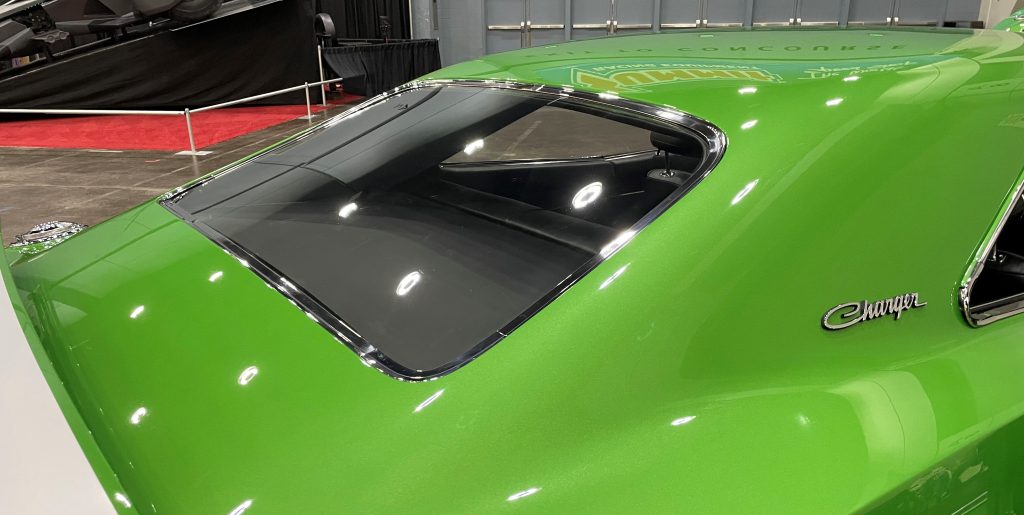
Plymouth brought its own Wing car to the party a little later. Using the Charger’s B-Body cousin, the Road Runner, Plymouth unveiled the newly-christened Superbird at the 1970 Daytona 500. Spoiler alert (pun!), it won that race. And in the hands of drivers like Richard Petty and Pete Hamilton, the Superbird and its winged counterpart the Daytona went on to dominate the Super Speedways during the 1970 NASCAR season.
All told, it was Bobby Isaac, driving a Dodge Charger Daytona, who took the 1970 NASCAR points championship.
Charger Daytona & Superbird Engine Choices
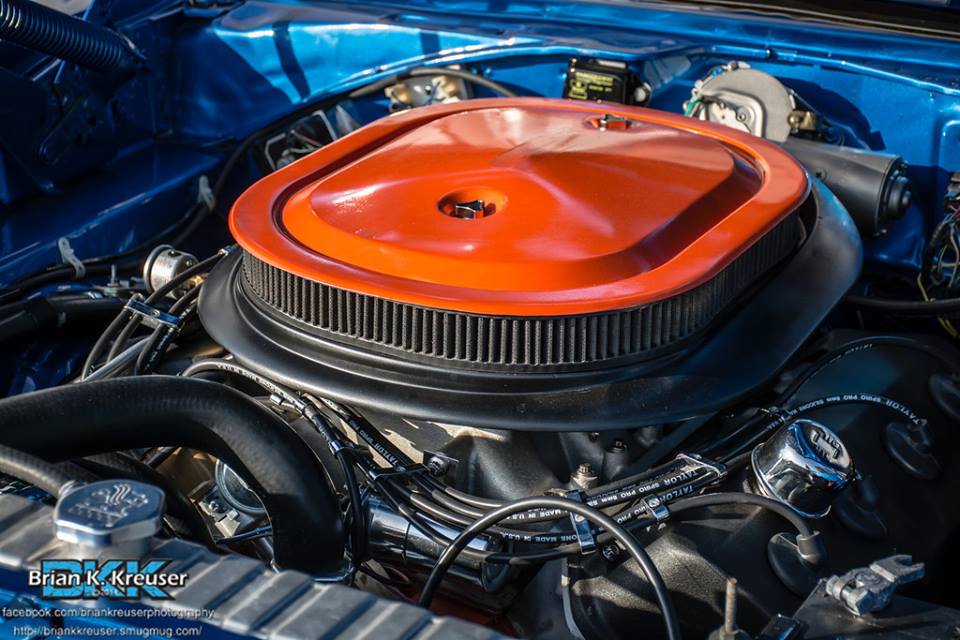
Both the Charger Daytona and Superbird came standard with Mopar’s venerable Magnum/Super Commando (Dodge/Plymouth) 440 RB Big Block. That motor was rated at 375 horsepower in base spec. It’s also worth mentioning that, while it wasn’t available on the Daytona, Superbird owners could get the 440 with a Six Pack (three 2-Barrel carburetors) that bumped output to 390 horsepower.
Of course, you could also opt for the (Dramatic Gopher) legendary 426 Hemi if that wasn’t enough. Elephant-equipped Daytonas and Superbirds cranked out an eye-watering 425 horsepower.
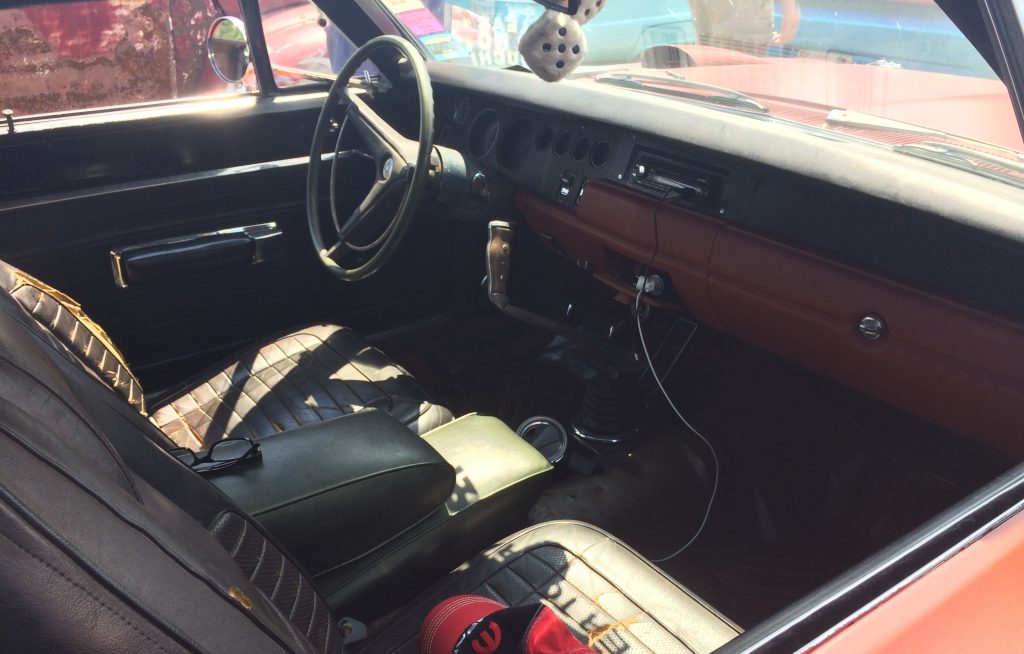
Some Key Differences Between Daytonas and Superbirds
While they may look similar, there are some key differences between these two Mopars that make them pretty easy to spot in a lineup.
First off are the sheetmetal nose cones. The Daytona’s is more pointed and features a horizontal mesh grille.
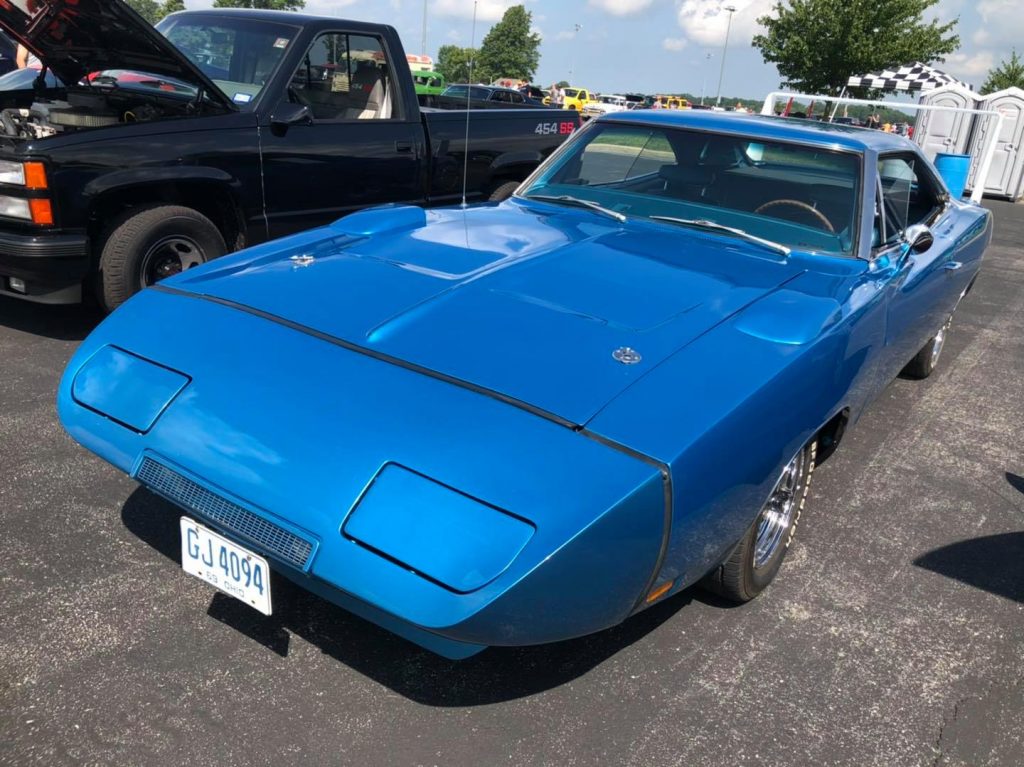
Both the Superbird and Daytona wings are about 23 inches high, and though rumors say the wing’s height was set to allow the trunk to fully open, the real story is that it was simply due to get the wing into the “clean” air above the car’s roofline. Curiously though, the Superbird’s wing is angled back a little bit more, compared to the steeper pitch of the Charger Daytona’s.
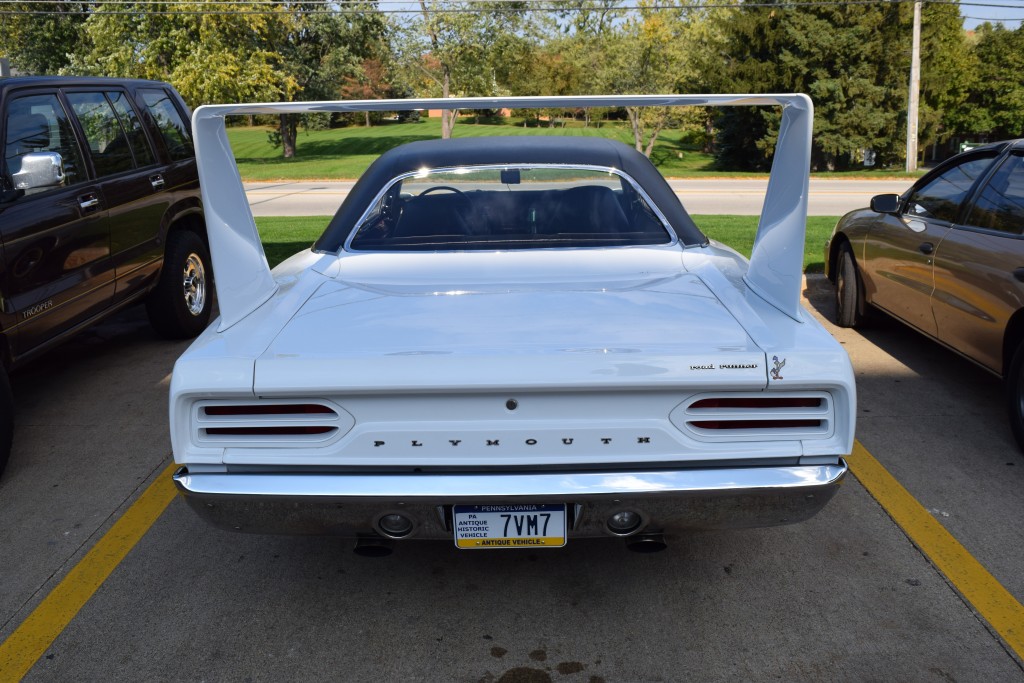
And when you’re out back, it’s much easier to discern the two cars, simply because they wear the different taillight treatment of the vehicles they’re based on, the Charger and the Road Runner, respectively.
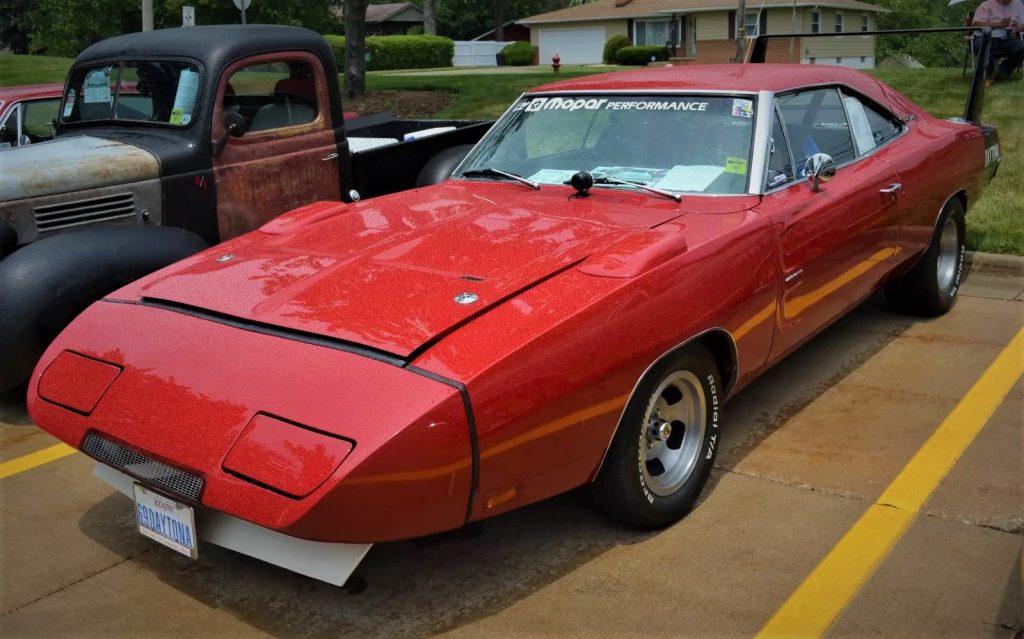
The flanks of each car each retain the styling cues of their base vehicles too: door indents for the Charger, a rear side scoop on the Superbird.
Oh, and the cars will probably either have DAYTONA or PLYMOUTH written on the rear quarter. File that under “duh.”
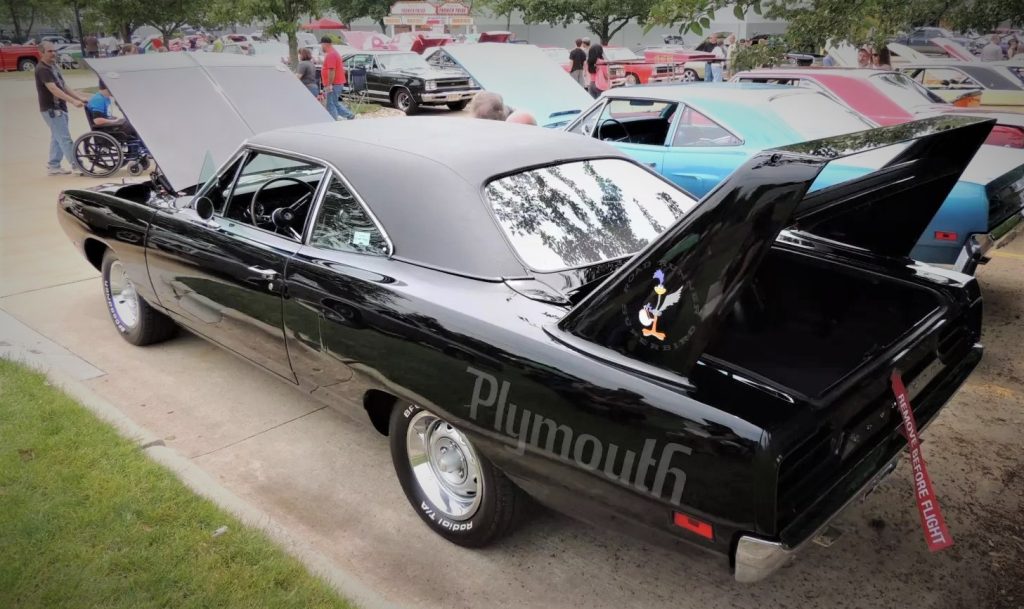
But perhaps the most noticeable difference between a Superbird and a Charger Daytona is the roof. Legend has it that Plymouth was in such a rush to get Superbirds onto dealer lots, instead of smoothing the welds and modifications done to the roofline and backglass for paint, it simply slapped a vinyl roof on top and sent ’em. That meant that public roadgoing Superbirds got vinyl roofs.
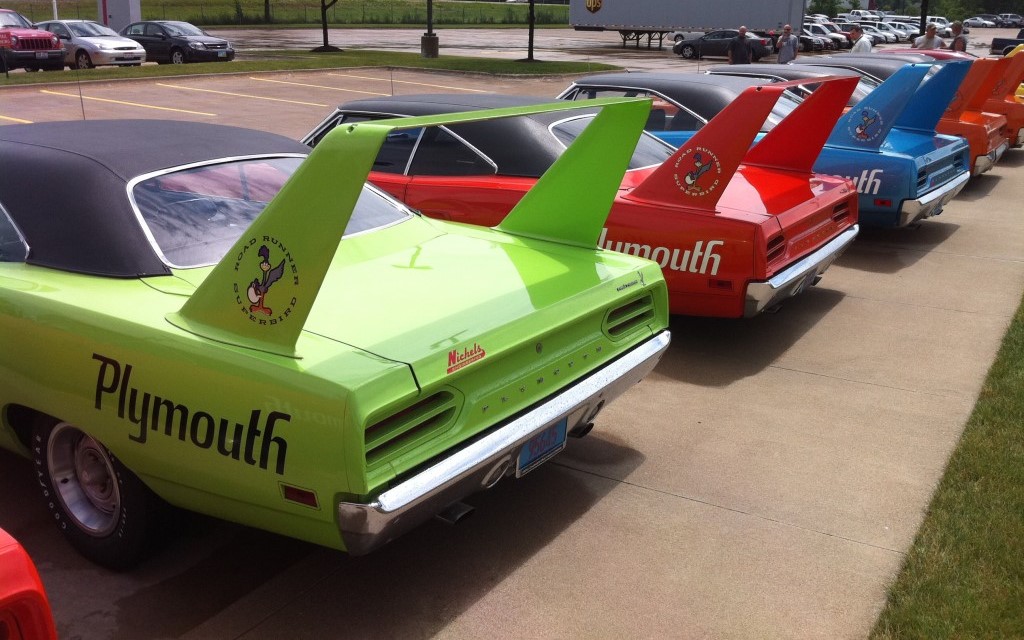
There’s one other noteworthy external difference. Remember those fender scoops covering cutouts above the wheels? On Superbirds that were sold to the public, the scoops were installed, but no cutouts we made in the fenders; they were only aesthetic accents.
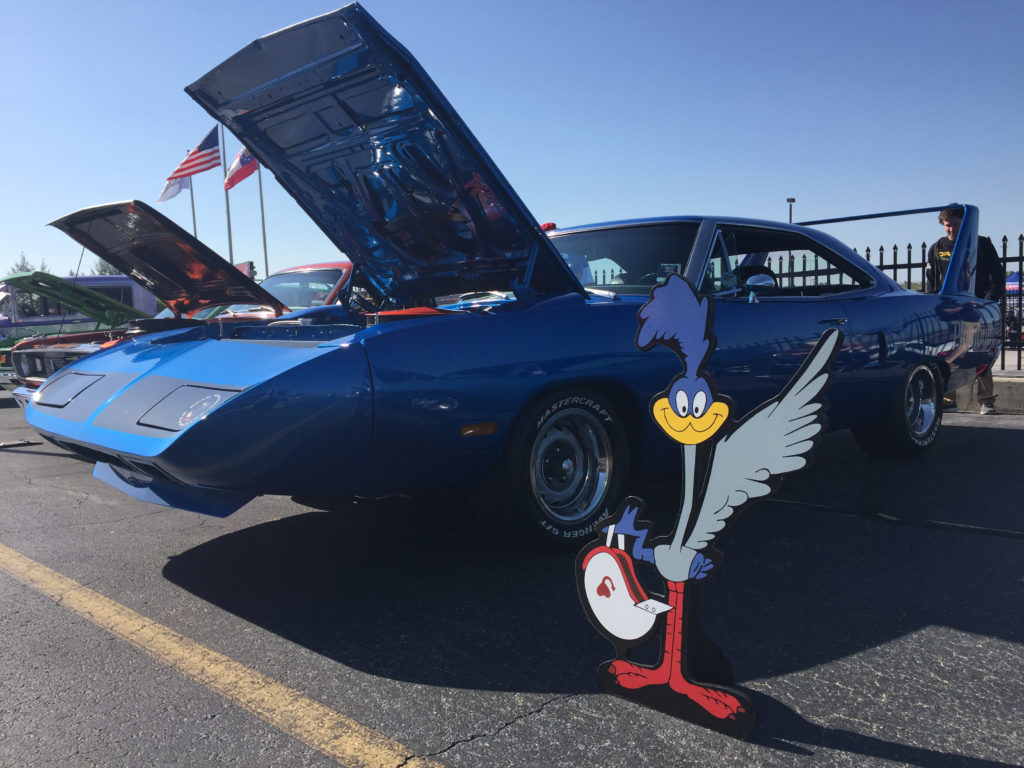
Say it With Us: Ho·Mol·o·Gate
We’ve alluded to this earlier, but perhaps the neatest aspect of these cars is that, thanks to homologation, they were sold in dealerships right next to Polaras, Monacos, Valiants, and Belvederes.
Homologation is a fancy word that, in a racing context, basically means that if a manufacturer builds a car for the race track, it has to offer the same car to the public.
Homologation is also the reason the public got to enjoy cars like the Ford RS200, Mercedes CLK GTR, Chevy Laguna Type S-3, and Lancia Stratos.
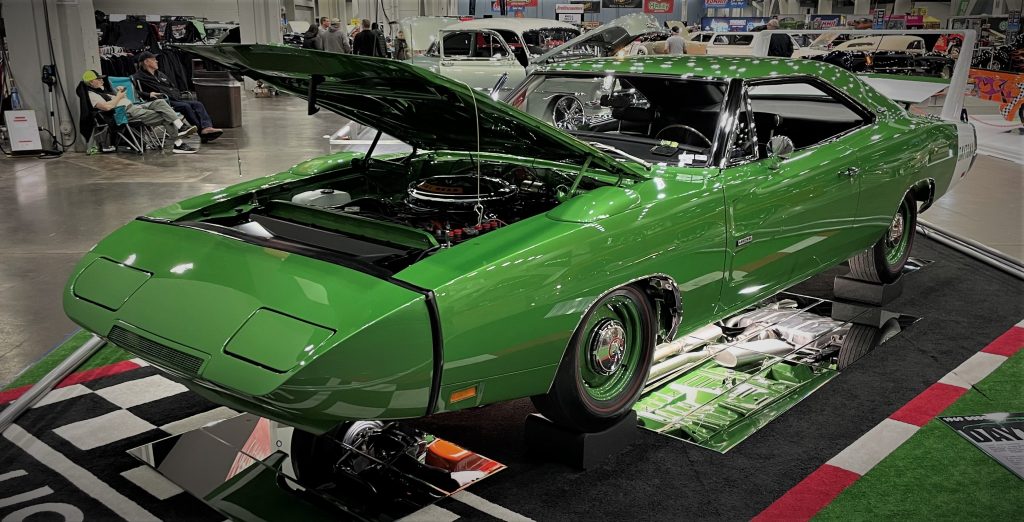
So when Dodge wanted its Charger Daytona on the track, NASCAR’s homologation rules stated that it needed to build 500 to sell to the public first. And Dodge did, making 503 to be exact.
Next year in 1970 though, NASCAR changed its homologation rules, making the number of cars you needed to produce relative to how many dealerships you had. For Plymouth, it meant somewhere between 1,920 to 1,935 Superbirds made it off the assembly line.
And that’s why Superbirds are far more common (relatively speaking of course) at car shows than their Daytona counterparts.
The Eye of the Bird-holder
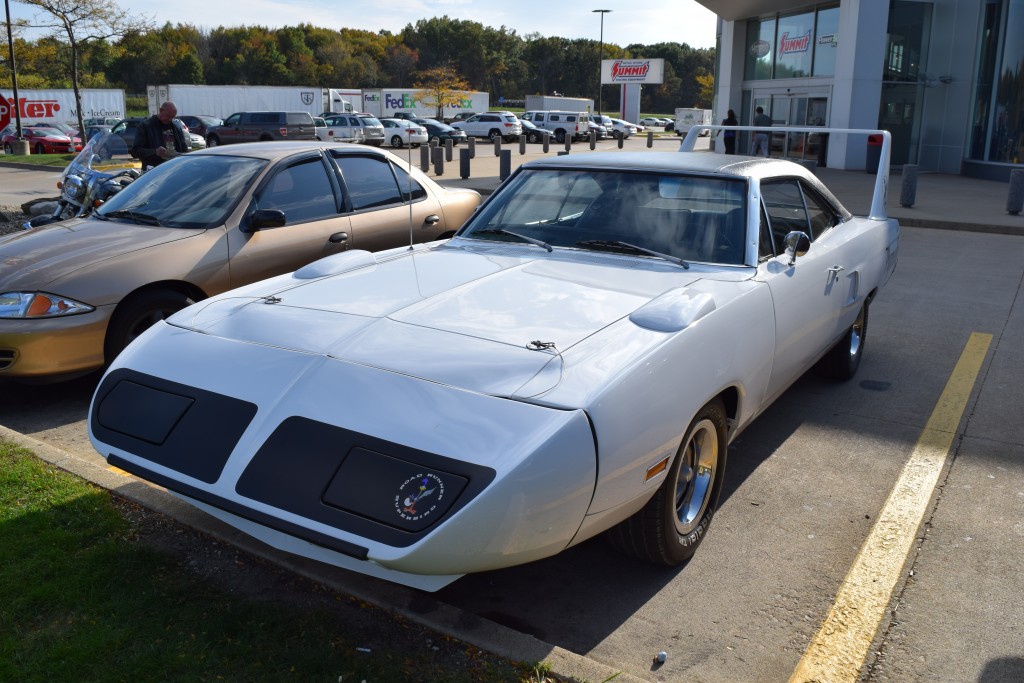
But the problem was, at the time, the public didn’t really see the appeal of buying a 200+ mph race car to get groceries. Worse yet, Daytonas and Superbirds were long, heavy, and had that glorious (yet polarizing) wing on the back. And in terms of stoplight-to-stoplight performance, the added weight of the wings and noses meant that these cars were often bested by their base Charger and Road Runner counterparts.
They were quite a bit more expensive than the other cars in the Dodge/Plymouth lineup too—for example, a 1970 Superbird was just shy of $4,300, but you could get a Road Runner for around $3,000.
So stories abound of Superbirds languishing on dealer lots. And more alarmingly, we’ve heard rumors of some dealers yanking the wings off entirely, simply to make them more appealing to would-be car buyers.
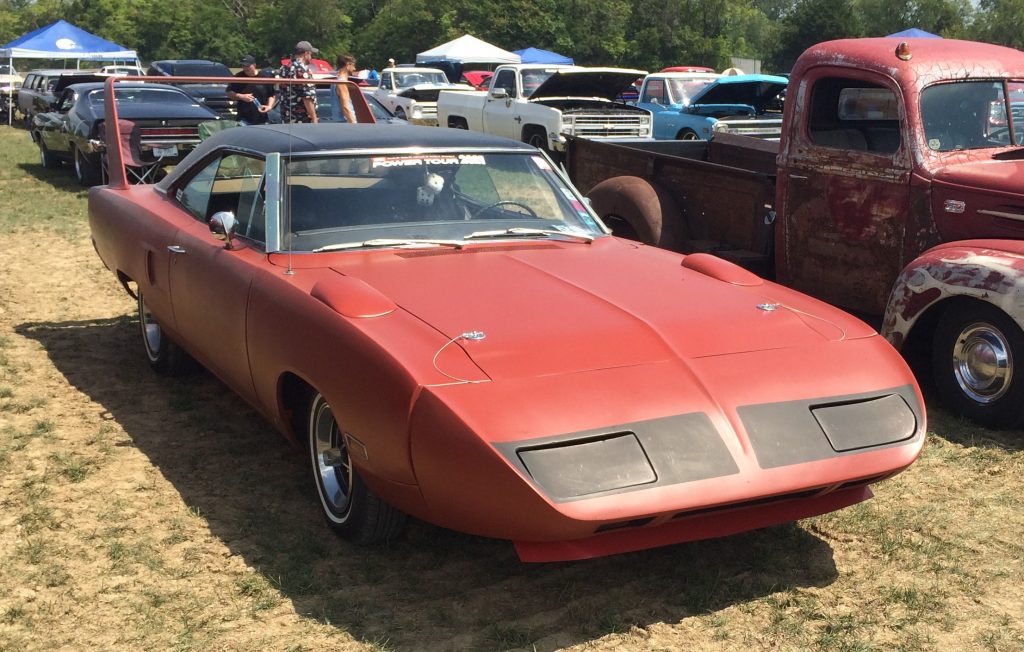
The Wings Are Permanently Grounded
Sadly, the heyday of all the so-called “Aero” cars, including rivals like the Ford Torino Talledega and Mercury Cyclone Spoiler II, was short lived. NASCAR could sense that, with the cars now topping 200 mph, things could get out of hand quickly. To address the issue, NASCAR tweaked its rulebook.
Into Aero cars? You may dig this article too: 170+ MPH & Street Legal: Check Out This 1969 Mercury Cyclone Spoiler II Before it Returns to Bonneville
But what a lot of folks don’t know is that NASCAR didn’t make these outlandish aero kits illegal outright. Rather, it simply limited engine displacement on the superspeedway cars, similar to what other race sanctioning bodies like the FIA and SCCA had done. And without the big-cube powerplants, these monsters couldn’t achieve the speeds in which the aerodynamic kits would offer any significant benefit—the tall wings and sheetmetal nose cones just became unnecessary weight.
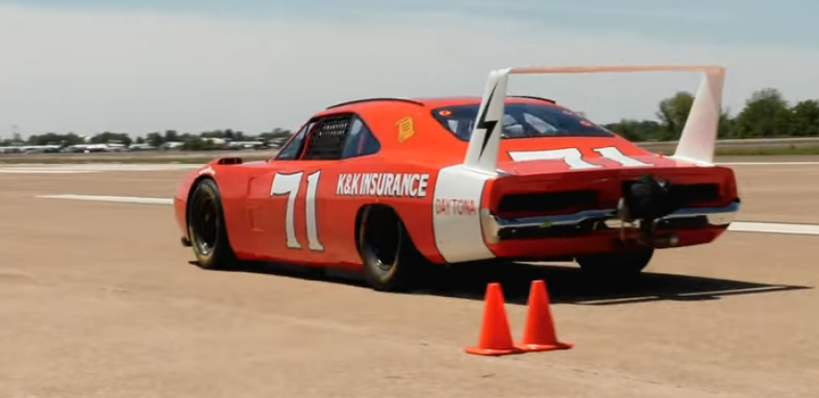
Still though, the mark both the Charger Daytona and Superbird left on the automotive world is far-reaching. They’re two of the most easily identifiable musclecars ever made and have spawned countless homage builds and tribute cars.
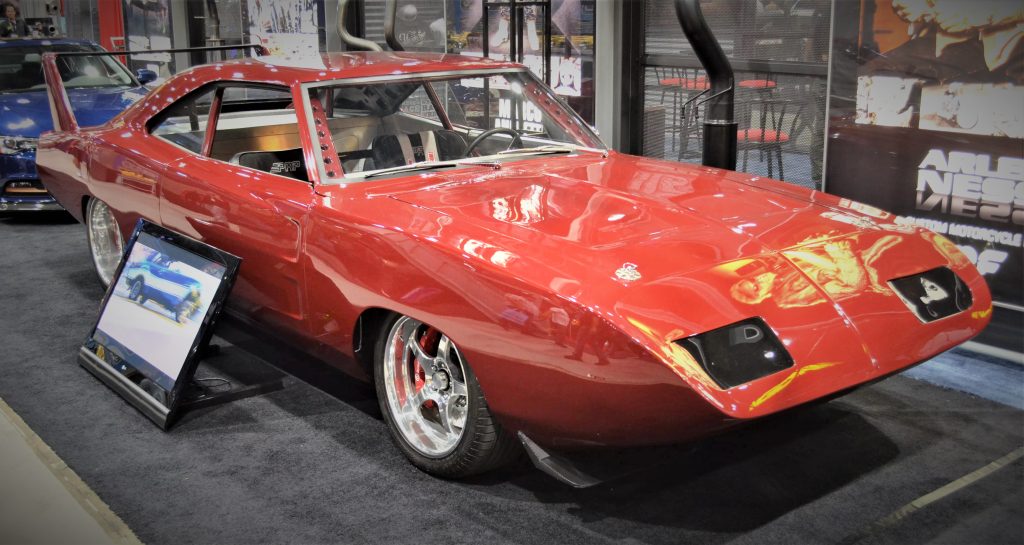
These names have remained in the public lexicon as well, largely due to continued appearances in showrooms. While Plymouth never re-used the Superbird nameplate, Dodge has revived “Daytona” several times over the decades, including appearances on LX/LD-era Chargers.
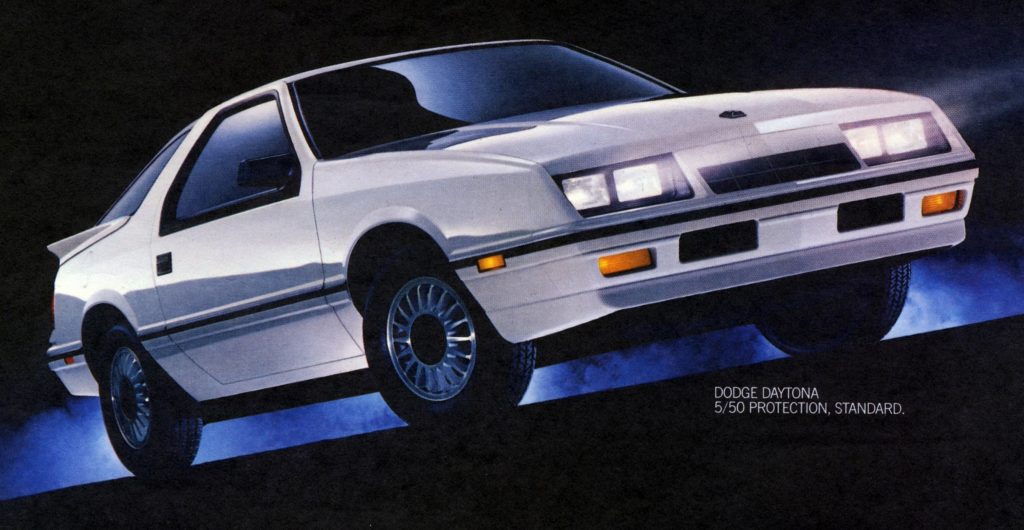
If that wasn’t enough, Dodge just brought the Charger Daytona back as an all-electric muscle EV concept, drawing on the aerodynamic namesake to inspire its innovative front nose spoiler. You can see the whole car for yourself here: Meet the Electric Dodge Charger Daytona SRT Concept.
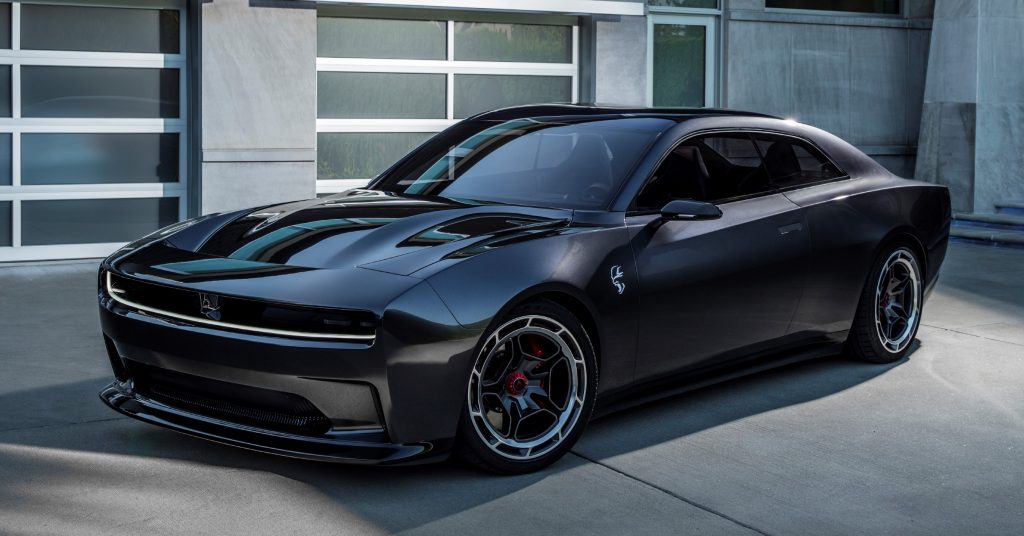
In the end, when you combine the cars’ short production runs and poor sales, you get two extremely rare and valuable models that are highly coveted by collectors. Heck, even original pieces like the wings and nose cones can command a hefty premium on the used parts market.
So next time you’re at a car show and see one of these beauties rumble up, make sure to get a closer look at a curious chapter in musclecar and NASCAR history.
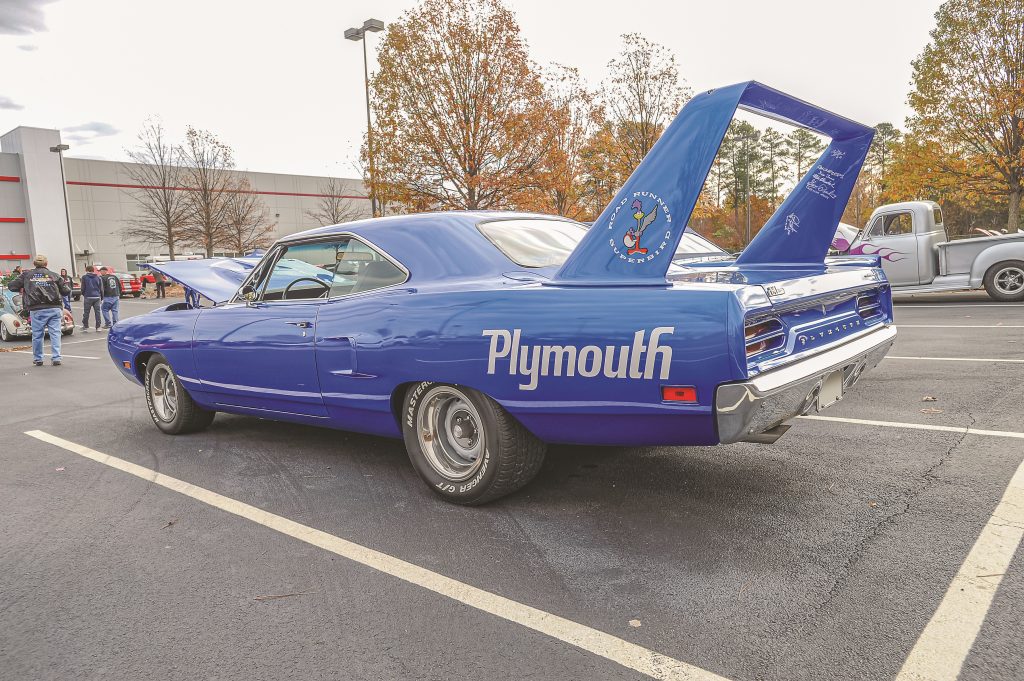
Still haven’t gotten enough of the legendary Mopar Wing Cars? Check out this video feature on a Charger Daytona that’s owned by a Summit Racing employee:

No Car like MOPAR!
I always liked the nose cone of the Super Bird better than the Daytona. On the other hand I’m not a fan of vinyl roofs. But when it comes down to it either one would be welcomed in my garage.
This article is mostly nonsense……..it says the cars dominated 1970…….lol they won 12 races out of 48…….I dont call that dominating…….it also claims the Charger 500 Never saw much track time……is the author on DRUGS……the Charger 500 ran the entire 52 race schedule of 1969 and in most of the events in 1970, accumlating 23 wins compared to 6 by the Daytona……and MOST of the Daytona wins came with a BIG ???? mark beside each one.
It seems you never saw real Daytona’s and Super birds in a NASCAR race. I did. Rockingham, 1970.
Yes, they dominated.
And Bobby Allison was the 1st driver to break the 200mph mark at Talledega, not Buddy Baker, in a Daytona of course.
Bobby Isaac’s #71 Daytona set many records at the Bonneville Salt Flats that still stand, like 235mph straight-line speed and the recently passed Charlie Glotzbach hauled a Chrysler engineer around their test track at at least 243 mph. In a Daytona. Charlie”s #99 Daytona was a race-winner even with France’s early engine restrictions. Top that, losers and liars…..
Hey David, While admittedly it’s vague phrasing, we worded it that way because, since the Daytona was introduced to the public in April, we were alluding to the fact that the 500 had only been out for a few months before the Daytona debuted and the two were then being developed concurrently. But we made some tweaks to the copy to make the distinction more clear.
[…] Wings & Things: A Quick History of the Dodge Charger Daytona & Plymouth Superbird – On September 14, 1969 an odd-looking Mopar rumbled onto the track for NASCAR’s first-ever Talladega 500—its sky-high rear. […]
[…] may have taken some of the mystique away from the Dodge Charger Daytona and Plymouth Superbird wing cars, but they are still a sight to behold. Imagine finding three of them in one location! There’s no […]